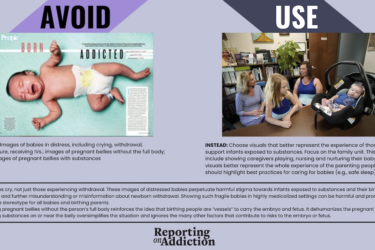
A Philadelphia police officer’s recent, fatal shooting of 27-year-old Walter Wallace Jr., as he wielded a knife, dramatized how, according to the numbers, those with mental illness are less likely to do harm than to be harmed, including by law enforcement.
In its most recent report on this topic, “Overlooked in the Undercounted,” the national Treatment Advocacy Center said persons with mental illness were 16 times more likely than those without mental illness to be killed during encounters with law enforcement. While the mentally ill account for 1 in 50 adults, they are estimated to represent 1 in 4 adults who are approached by police, the center’s researchers wrote.
(Additionally, a University of Wisconsin sociologist’s researcher concluded that the focus on the race of those killed by police has placed police killings of those with mental illness on a kind of backburner.)
The vast majority of mentally ill persons who come into police contact are not violent, said Risdon Slate, Ph.D., a Florida Southern College criminologist and author/co-editor of “The Criminalization of Mental Illness: Crisis and Opportunity for the Justice System.” And those who are violent, he added, also are active substance abusers.
“Wouldn’t it have been better if we could have prevented [Walter Wallace] from ever being out there on the streets with a knife?” said Slate, who’s helped police departments nationwide refine crisis intervention training for officers dispatched on calls involving the mentally ill.
“I’m sure his family did all they could. But they are at a loss. They need someone to help them navigate what really is an inadequate system.
“We have to make sure these things are not set up so that this keeps happening. We have to better at intervening, so that, more and more, police on these calls are working hand-in-hand with social workers and caseworkers … “
Which isn’t to say there hasn’t been progress on this front. An increasing number of police departments have — out of necessity, including concern that police are spending too much time as de facto mental health workers — developed those aforementioned crisis intervention teams.
President Trump’s June 2020 executive order cited the need to remove the burden of handling the mentally ill from law enforcement and to create a more adequate mental health care system. That order also directed the U.S. Attorney General, Health and Human Services Secretary and Office of Management and Budget Director to coordinate resources and earmark more dollars toward special training of police to help limit those interactions and arrests of the mentally ill. Rather, those individuals would be managed through mental health treatment courts, with their attendant mental health care supports, to keep them out from behind bars and safely in the community.
Indeed, according to the Treatment Advocacy Center, a better mental health care system would reduce police interactions with the mentally ill, which, themselves are no longer captured in a reliable database. In 2015, researchers wrote, the federal Bureau of Justice Statistics stopped tabulating what limited data it had on this front because law enforcement agencies weren’t submitting reliable data.
Still, according to the Treatment Advocacy Center wrote, “When data have been rigorously collected and analyzed, findings indicate as many as half of all law enforcement homicides ends the life of an individual with severe psychiatric disease.”
More relevant research and news coverage:
- Effectiveness of crisis intervention training, published in “The Journal of the American Academy of Psychiatry and the Law” in September 2019.
- How some crisis intervention teams are failing, aired on NPR in September 2020.
- Deaths of the mentally ill, by race, during police interactions, published in International Journal of Law and Psychiatry, October 2016. (Based partly on reporting in The Guardian and Washington Post)
- Mental health crises significant factor in police shootings, publishes in Chicago Policy Review, January 2019.
Story ideas:
- A disproportionately higher share of police shootings of the mentally ill occur in small towns and rural outposts. This October 2020 Washington Post article said such shootings were 39 percent more likely to occur in rural than urban settings.
- In various locales, sheriffs (they run jails for pre-trial detainees and are key point-of-contact for those with mental illness) are doing their own innovating. As examples, the sheriff of Hillsborough County, Fla., launched a behavioral resources unit in October 2020. In September 2020, the sheriff of Pinellas County, Fla., expanded a mental health-related calls center that’s part of a special mental health unit formed back in 2016. The Council of State Governments Justice Center tracks some of those innovations. What’s going on where you are?
- Likewise, what, if anything, has your local police department done in terms of crisis intervention? In February 2021, mental health clinicians are slated to replace some New York Police Department sworn officers in two precincts where mental health distress calls have been especially high.
- What’s spent or saved — in policing, corrections and mental health care dollars — based on these interventions?
- Who are the potential Walter Wallace Jr.’s where you live? What do they suffer? For how long? What have been the difficulties and strides in managing their care?
- The National Alliance on Mental Illness advises people on how to handle the arrests of their loved ones, get their medications to them while they are in pre-trial detention. There are a bevy of stories there.







